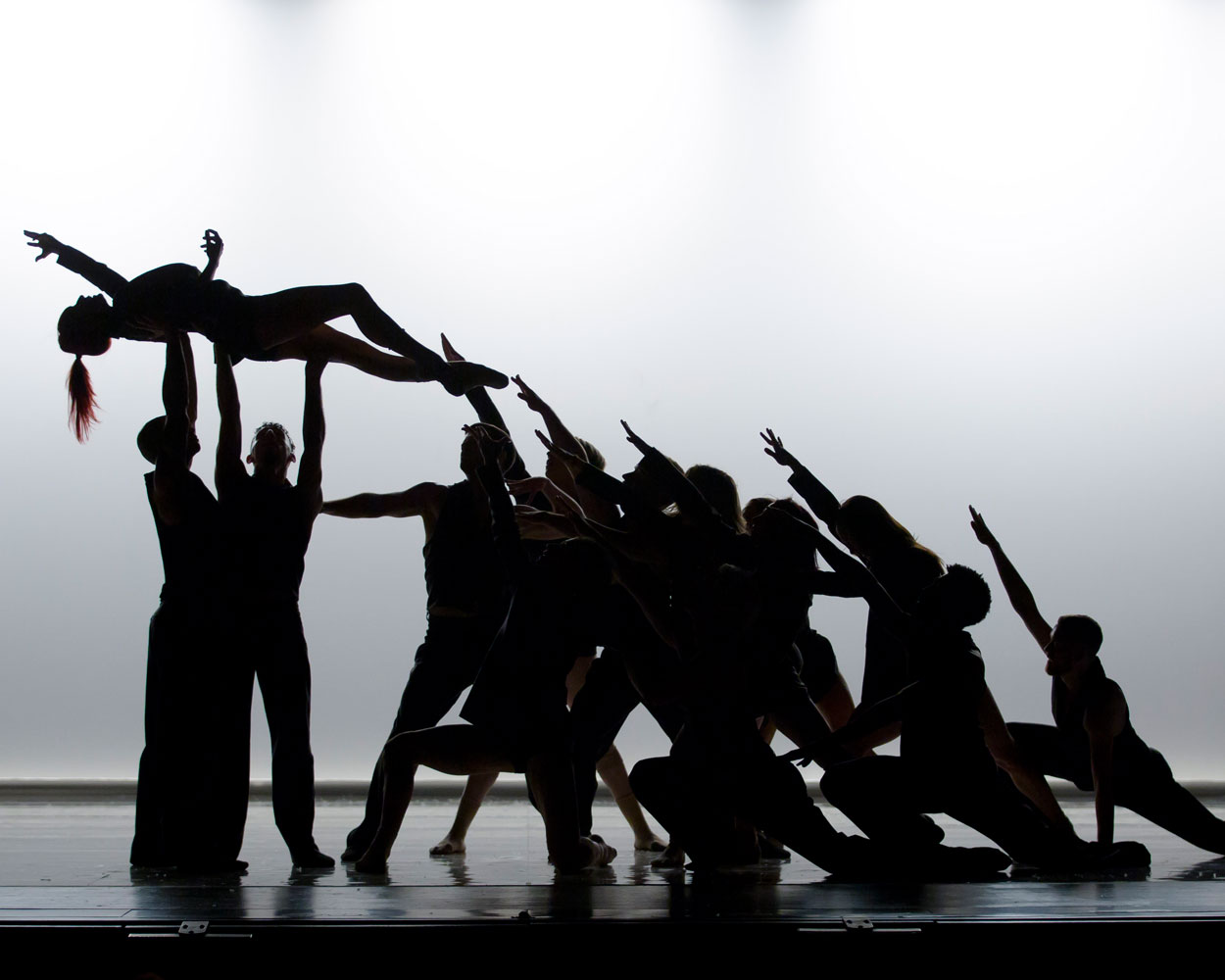In an eclectic display of strength, resilience, and multiple art mediums, Les Ballets Jazz de Montréal (BJM) carried on the late Leonard Cohen’s spirit in their exclusive new performance entitled, Dance Me. By performing solely to Cohen’s music and spoken poetry, the dancers honoured his memory by evoking similar themes and messages that were recurrent in Cohen’s work. Debuted in Montréal in December 2017, BJM has begun touring this original production and has hopes of sharing it with audiences around the world.
Cohen was a well known Canadian novelist, singer-songwriter, and poet. One of his most iconic songs was “Hallelujah,” released in 1988, which has been covered thousands of times by many different artists. Born in Montréal in 1934, he travelled around North America and lived in many places, and the influences of this are clearly seen in his work. All his works evoke great imagery, and he focused his pieces to emphasize themes of the human experience, including love, loss, sexuality, and death. He is seen as an icon in the arts world, and BJM’s piece is a testament to how his works are still revered and honoured today.
The two artistic mediums that Cohen primarily employed were music and the written word. BJM sought to channel this by using different forms of art in their performance. Not only did they use dance, but they also used technology to project images and excerpts of poetry on a backdrop, and they had two singers that sang two of Cohen’s songs. This multimedia aspect of the performance had both positive and negative aspects. The live singers reflected the raw and human nature of Cohen’s work. The singers added greatly to the performance, and it was a needed change from the harsh choreography that the audience was bombarded with. The technological aspect, however, did not add to the performance as the singing did. The symbolism behind adding the technology was to illustrate how Cohen’s work has endured and inspired throughout generations. It was a well-intended effort, but it did not have the desired effect. The images projected on the back screen, particularly in the dance number to Cohen’s “Tower of Song,” proved to be somewhat tacky and took away from the deep and beautiful nature of Cohen’s work. It was a good attempt to combine a classic legend’s work with the modern world, but in this case, Cohen’s work would have been able to stand on its own, and the technological aspect was not necessary to enhance the already moving music and poetry.
The choreography itself was a strange amalgamation of a seemingly forced effort to put a modern twist on classic folk music of the late 20th century. The style of dance was more contemporary, but the actual movements were more eccentric. Unfortunately, this did not pair effectively with Cohen’s soft rock style and lyrical mastery, which has softer tones, explores deep themes, and is diverse. The choreography, in turn, was aggressive and repetitive. As a result, the initial reaction to the odd mix of modern dance and Cohen’s music clashed. However, as the performance progressed, the audience got used to the juxtaposition. Regardless of the less than satisfying choreography, it was executed with grace and strength by the dancers. The choreography had extreme technical difficulty, but the dancers were clearly up for the task as they made it look effortless.
Despite its shortcomings, Dance Me was an intriguing piece and evoked emotion in both Cohen fans and those not familiar with the artist. The production continues its tour in Quebec, France, and Finland through the summer, and gives its final run in November 2018.
Photo provided





![Here’s how your favorite media platforms shape your world view without you realizing it Advertising revenue and subscriptions are the main source of income for news outlets. [Graphic by Sara Mizannojehdehi]](https://charlatan.ca/wp-content/uploads/2021/07/11BE7ADB-1CC8-46E8-ADB4-568B3C7F1265-218x150.jpeg)
